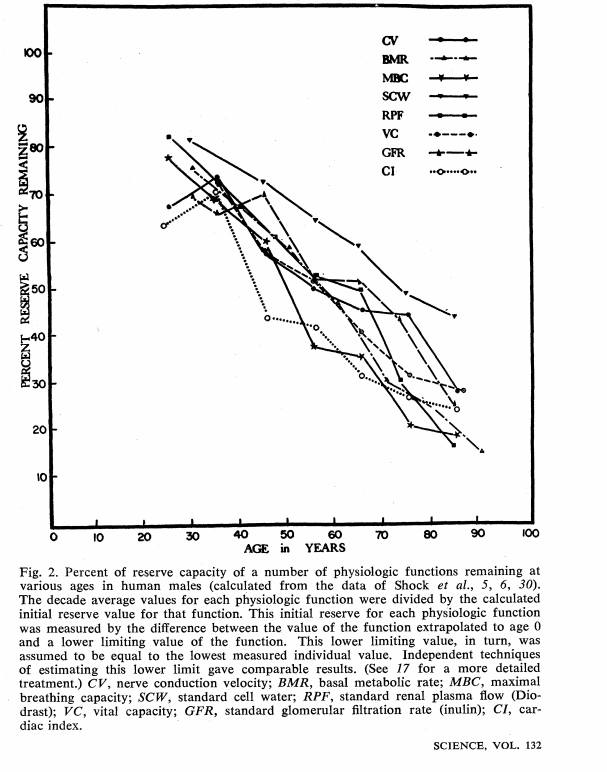Theories of Mortality
http://www.longevityhistory.com/theories-of-mortality/
Mildvan AS, Strehler BL (1960) A critique of theories of mortality.
In: Strehler BL, Ebert JD, Glass HB, Shock NW (eds) The biology of aging: a symposium held at Gatlinburg, Tennessee, May 1–3, 1957, under the sponsorship of the American Institute of Biological Sciences and with support of the National Science Foundation. Waverly Press, Baltimore, pp 216–235
https://archive.org/details/biologyofagingsy0000stre/page/n9/mode/2up
Summarized in: Stambler I. Health and Immortality. In: Explaining Health Across the Sciences. Springer Nature, 2020. https://doi.org/10.1007/978-3-030-52663-4_26
https://www.researchgate.net/publication/343939936_Health_and_Immortality
And “History of Life-extensionism in the 20th century”
http://www.longevityhistory.com/read-the-book-online/#_edn1019
“The theories of mortality developed in the 1950s built on much earlier concepts, such as Benjamin Gompertz’s law of an exponential increase in mortality rate with age, posited in 1825, or Karl Pearson’s population mortality statistics of 1900. Yet, they were more elaborate, quantitatively relating the rate of (molecular and cellular) damage and loss to the rate of mortality. Several theories of mortality were formulated between 1952 and 1960. Thus, according to the theory of Elaine Brody and Gioacchino Failla, the “mortality rate is inversely proportional to the vitality.” In the theory proposed by Henry Simms and Hardin Jones, death was attributed to “autocatalytic accumulation of damage and disease,” where “the lessening of vitality [is regarded] as the accumulation of damage” and “the rate at which damage is incurred is proportional to the damage that has already been acquired in the past.” George Sacher’s theory stated that “death occurs when a displacement of the physiologic state extends below a certain limiting value” (Mildvan and Strehler 1960).
Yet, perhaps the most developed and publicized theory of mortality was the theory proposed by Bernard Strehler and Albert Mildvan or “the Strehler-Mildvan theory” (Strehler and Mildvan 1960). It claimed that “the rate of death is assumed to be proportional to the frequency of stresses which surpass the ability of a subsystem to restore initial conditions” (Mildvan and Strehler 1960). The theory was based on the Maxwell-Boltzmann distribution (originally formulated for the kinetic theory of gases in the 1860s), where the linear decline of function of particular organs in time was supposed to eventually lead to an exponential increase of risk for systemic failure of homeostasis of multiple organ systems and hence an exponential increase of mortality rate. The loss of organ function or “organ functional reserve” was potentially attributable to progressive loss of functioning organ and tissue units, such as cells, or gradual impairment in the functional capacities of individual cells (Mildvan and Strehler 1960). This model formed the theoretical basis for the “compression of morbidity” concept.”
See also: Strehler BL, Mildvan AS (1960) General theory of mortality and aging. Science 132:14–21 https://www.science.org/doi/10.1126/science.132.3418.14
